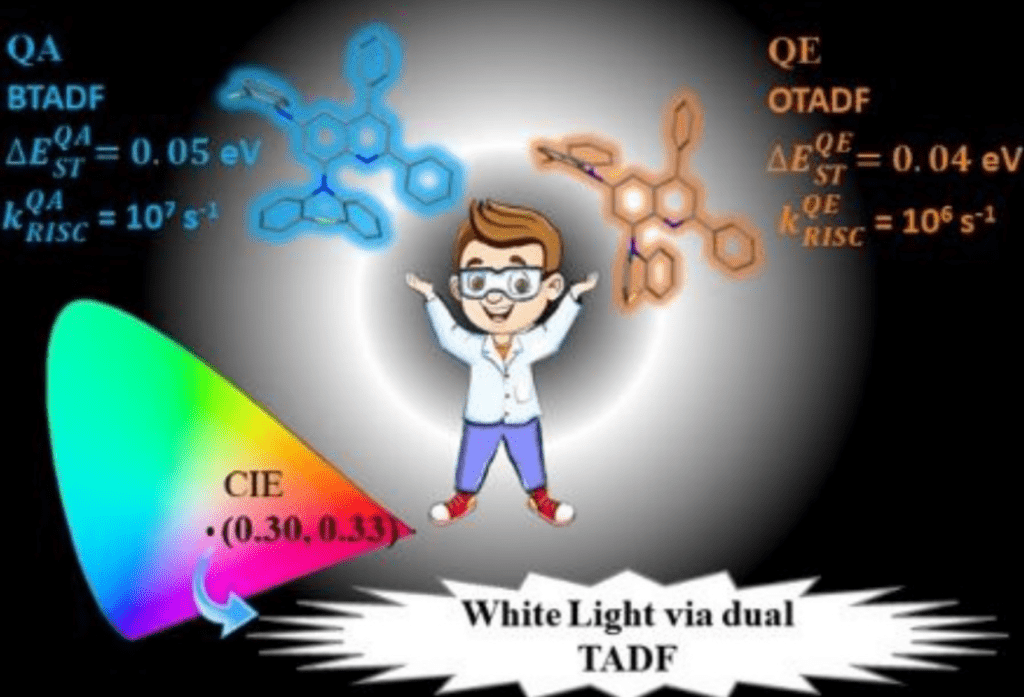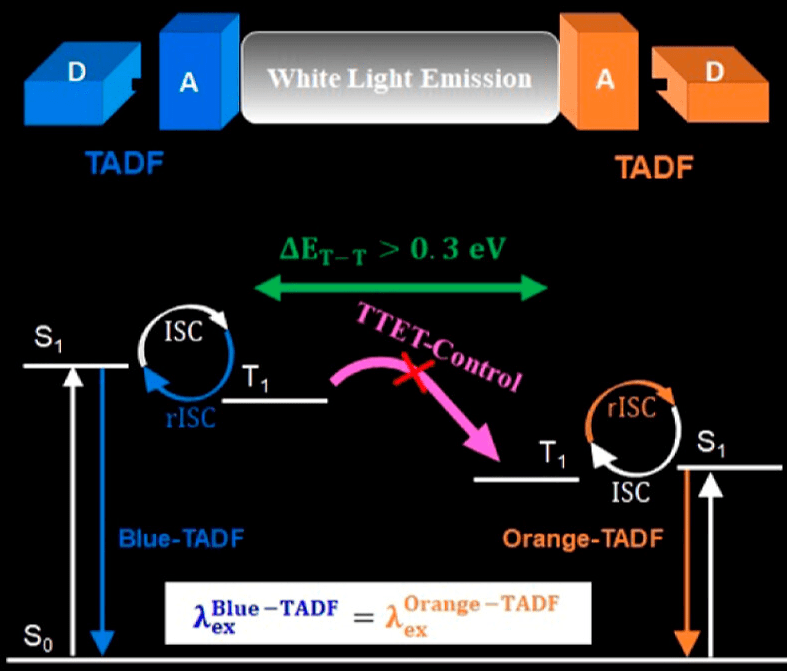Single-component Dual TADF system
We are also engaged in achieving white light emission (WLE) through a conformational isomerization approach applied to a single-component organic system. Introducing a novel twisted donor-acceptor molecule enables us to generate WLE covering the visible spectrum through simultaneous blue and orange thermally activated delayed fluorescence (TADF). This advancement addresses a longstanding challenge in WLE design within a single-component system and presents a promising avenue for developing highly energy-efficient WLE emitters suitable for WOLEDs. Our findings contribute to a fundamental understanding of TADF mechanisms and hold practical implications for the development of advanced lighting and display technologies.
Multicomponent Dual TADF system
Our group presently focuses on developing white organic light emitters (WOLEDs) using a novel approach involving multiple thermally activated delayed fluorescence (TADF) emitters. By integrating blue and orange TADF materials without energy-transfer mechanisms, our goal is to achieve high-efficiency WOLEDs capable of emitting two or three colors within a single emissive layer. This innovative strategy addresses the limitations of conventional WOLEDs and presents promising opportunities for advancing WOLED technology. Our work contributes to understanding energy-transfer phenomena and holds practical implications for designing and fabricating energy-efficient WOLEDs, thereby paving the way for future advancements in lighting and display technologies.


